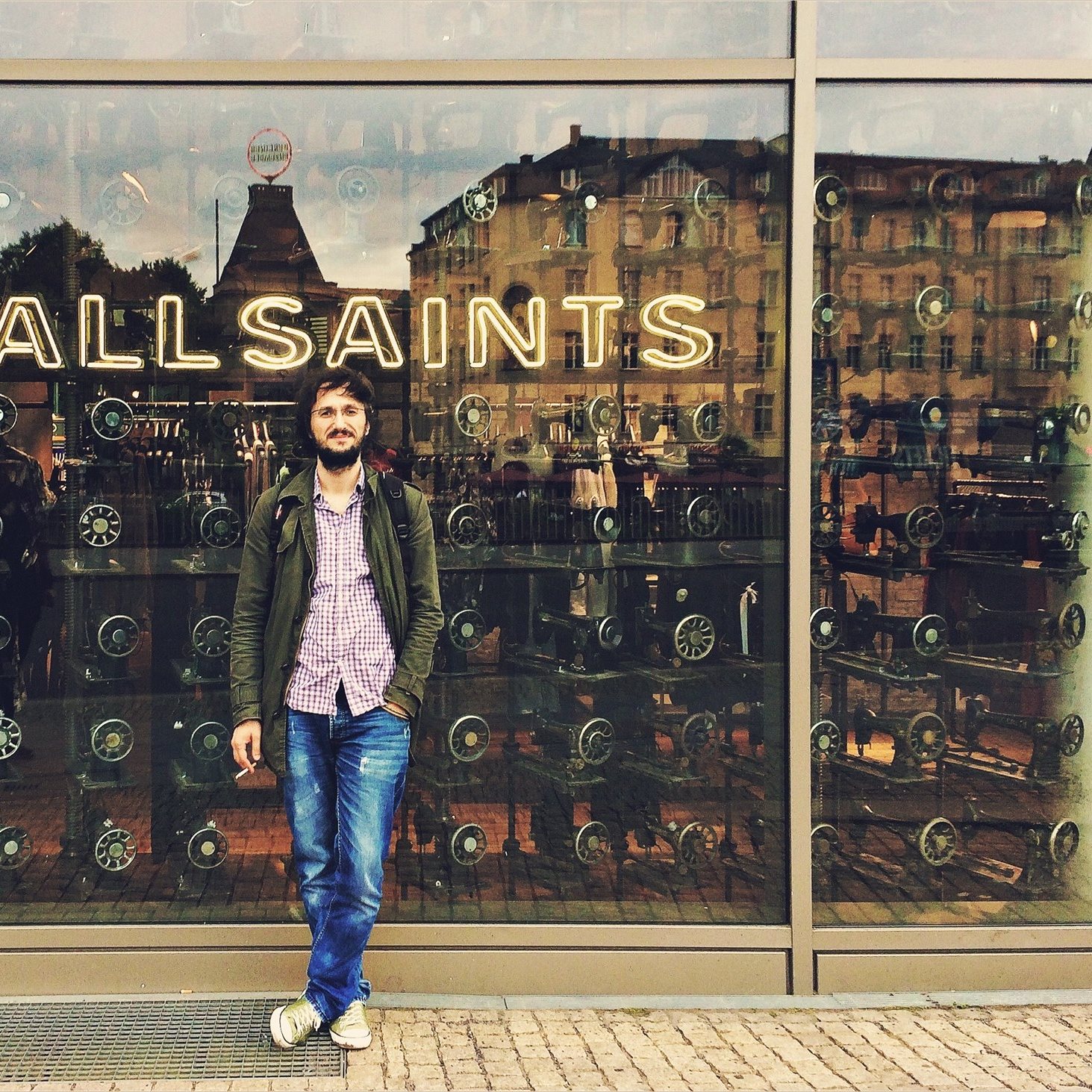 |
Mersid Ramičević is a composer and performer, working in community-based art, acousmatic and instrumental music and sound art. He is an alumnus of the European Master Program in Contemporary Performance and Composition and holds a Master degree from the Hamburg University of Music and Theatre. He participated at Academy of Contemporary Music in Lucerne, Switzerland, Donaueschingen Music Days’ the „Next Generation Programme“, Germany and Acanthes/IRCAM Composition Masterclass in Metz, France. He is interested in the medium of sound through the notion of the performer, a sort of witness, and in music composition as an interface of social derivations. On the other hand, he looks to the audience to describe general temporal processes where the specific intrinsic mechanisms guide behavioural patterns and situate general human habits.
|
He was a contributor to klingt gut! Symposium on Sound 2017, Arts and Media Campus Hamburg, Sound and Music Computing Conference & S.T.R.E.A.M. Festival 2016, KampnagelHamburg, Grame Biennale Musiques en Scene Lyon 2015, Amphitheatre de Opera Lyon, Collective Conversation 2015, Tensta Konsthall for contemporary art, Stockholm. Also, he has performed at various art venues in Estonia, France, Sweden, Slovenia, Bosnia-Herzegovina etc. and participated in collaborative art projects dealing with movement, improvisation, art theory and making. In 2015. he founded in Lyon an ensemble for contemporary music with a lupophonist Martin Bliggenstorfer and ZlatkoBaracskai, an electronic musician. To date, he has been supported by the Hamburg City Fund For Young Talents, the Hamburg Students’ Centre, Otto Stoterau Foundation, PekarnaMagdalenskeMreže, Slovenia and Erasmus+ Programme. During his Sarajevo studies, MersidRamičević received the “Special acknowledgement Karim Zaimović” for academic achievement and contribution to Sarajevo and Bosnia and Herzegovina culture.
Artist’s statement
The elements of Mersid’s interests employed in this piece come from an experience of artistic procedure that he once used to explain in terms of desire - creative reflection upon an embodied heritage, resistance - autonomy of the artistic work and artistically conveyable experience and trauma - historical aesthetic sensitivity, ethics. This piece is essentially dealing with sonic experience related to the memory and sound acts as tools for defeating the ephemeralness of listening.
A Word Is Not A Word, Not That Word: Children’s Song is a piece informed by post-war acoustic territories, states of denial and citizens’ silence. It is a multichannel live sound performance which uses different kinds of equipment, midi and sensorial controllers, to transmit the sound and control the performance, keeping in mind that this opens a wider view on the socio-political implications of being exposed to “sensoring” and furthermore - censoring.
By adjusting his artistic medium, Mersid is trying to navigate through the available materials, following the language of euphemisms in the press, going through the variety of published findings and literary stances as well as relying on his own experience of residing on thepolitical margins in a country obsessed with the invention of historical narratives. Conducting a performance by investing in the artistic research into a previous time, his work evolves out of the spoken word inrelation to multiple testimonials and their versatile intermedial twists.
Furthermore, he draws on the iconography of sound, questioning the premises constituting a compositional practice and performance in its final instance. Keeping improvisation as a method for improving sound morphology and bringing in theoretical reflections as a mode of conversation that should take effect, a play of a lecture is held.
A Word Is Not A Word, Not That Word: Children’s Song turns the spotlight to the issues of performing authenticity, the acoustic echo of testimony and responding to the call of aural witnessing, while mediating the transferability of the concepts that are seen either as passively auditive or participatory conditioned by the sets of their own standards and communal norms.
This musical piece, performed successively within the given the social circumstances of the four proposed cities in turn (Trento, Belgrade, Vienna and Sarajevo), proposes a cyclic perspective towards the form of the artwork.
Mersid Ramičević